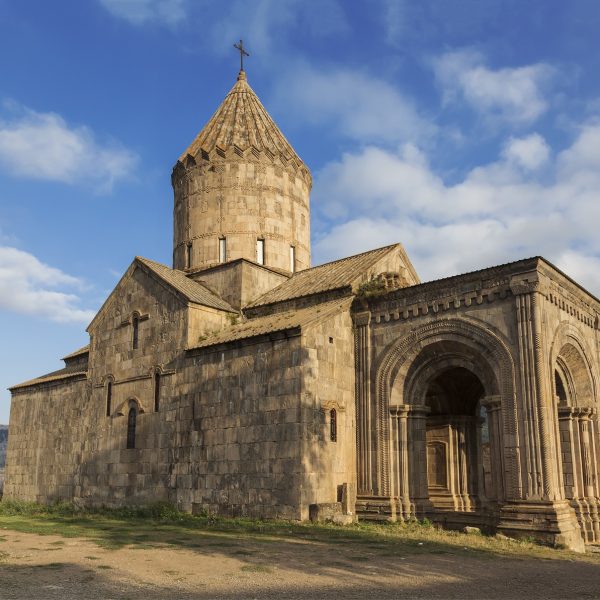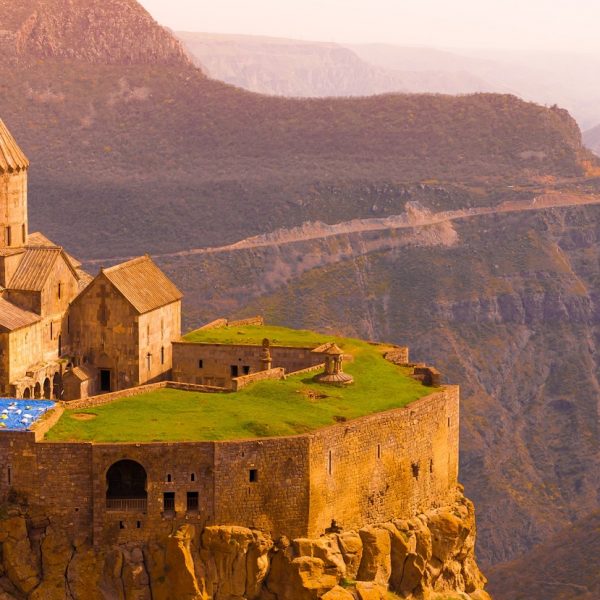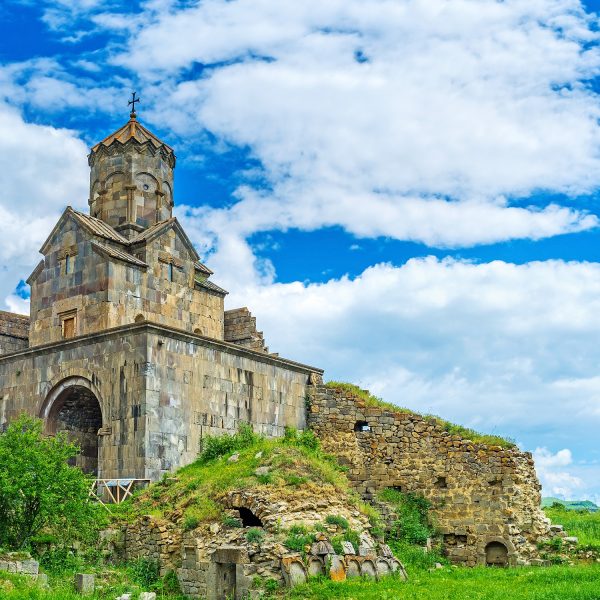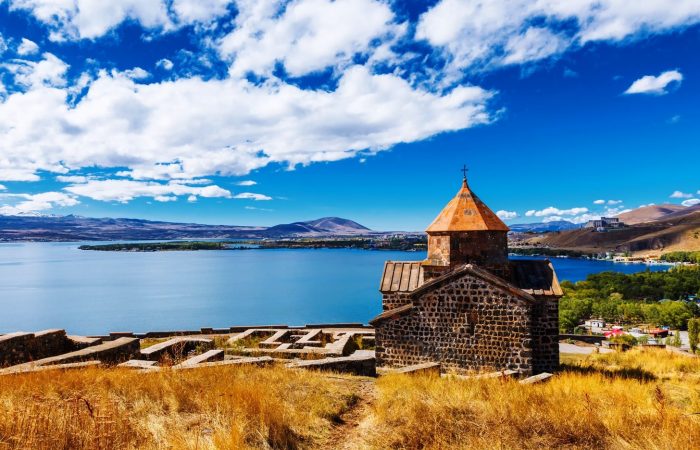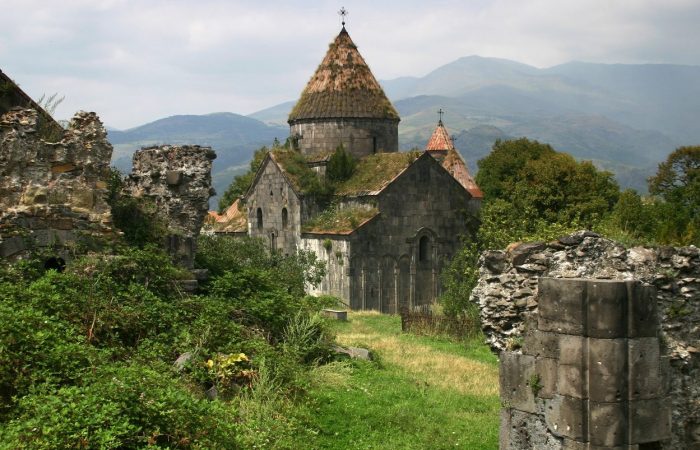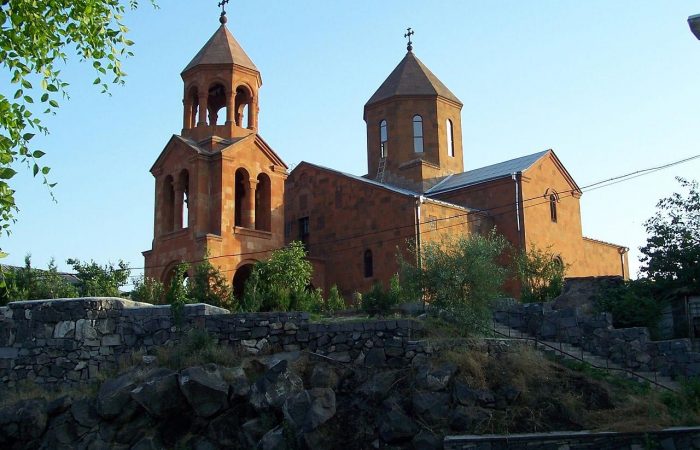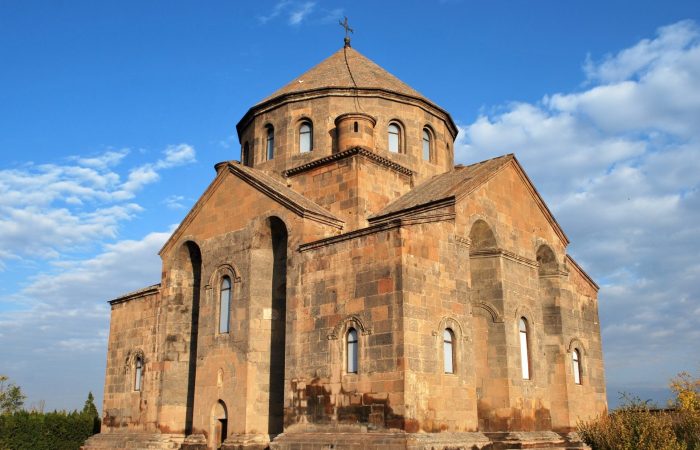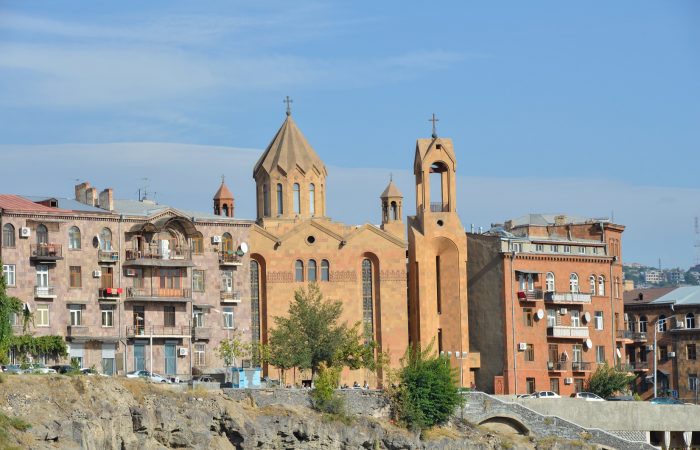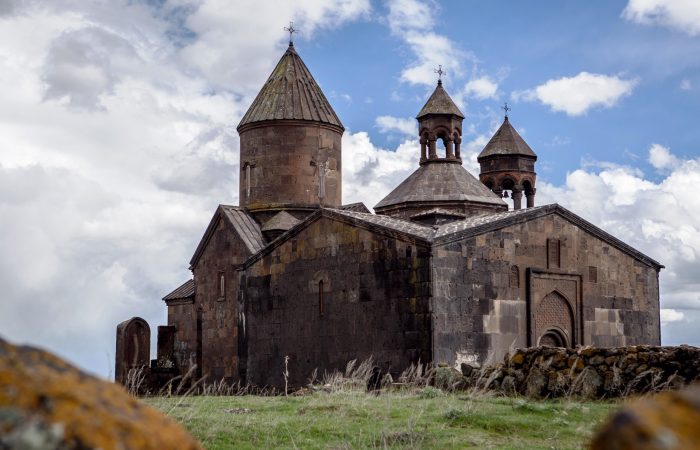Tatev Monastery: Throughout the Centuries
Tatev Monastery has passed such a long way and has recorded such a rich history that it’s sometimes hard not to get confused and not to lose the track of events.
The legend has it that the monastery was firstly named after Eustathius. Eustathius was the disciple of Apostle Thaddeus, who preached Christianity in the first century in Armenia. In the fourth century a small church was built on the relics of Saint Eustathius. It was the first church of the monastic complex. In the fifth century the church became a pilgrimage site. Note that until the 8th century the name of Tatev was not mentioned anywhere. In the 8th century the monastery was turned into Syunik’s Bishopric.
In 839 Syunik’s Bishop David purchased the villages lying around the monastery. After the Arab invasions as a result of which Armenian princely houses were ruined, Bishop David assembled Syunik princes in the monastery (844). It was then followed by land donations to the monastery. The acquirement of the lands was as valuable as the relics being kept in the monastery (the relics of Saint Hovhannes, Saint Stepanos Nakhavka and Saint Hripsime, Saint Astvatsatsin’s (Holy Mother) hair). Also, it was then that Prince Pilippe gifted the village of Tatev to the monastery and built the Church of Saint Grigor.
In 895-906 the Church of Saint Paul-Peter was built. In 1087 the Church of Saint Astvatsatsin was consecrated. Back then 264 villages in ten regions were paying taxes to the monastery, and it was the period when the monastery was flourishing and was in its full swing.
In 1170 the prospering period came to its end, since the Seljuk invasions had resumed. Fearing the destructions the invasions might cause the monastery’s library was moved to Baghaberd in 1169; unfortunately that was not a way out as the Seljuks burnt all the manuscripts. Other than that, they attacked Tatev Monastery and plundered it. The monastery was restored at the end of the 12th century and in the beginning of the 13th century under the auspices of the Zakaryan and Orbelyan princely families. The previous lands were returned to the monastery. Archbishop Stepanos Orbelyan was appointed the monastery’s spiritual leader, and it was then that the belfry of Saint Paul-Peter church was built (1286) and the church of Saint Grigor Lusavorich (Gregory the Illuminator) was completely re-built (1295). Also, upon his order two huge bells were cast (the bells can still be seen in the monastery). Within the 13th-14th centuries there were 678 villages paying taxes to the monastery.
During the 14th century Lenk Timur’s invasions the monastery was plundered and burnt. In the second quarter of the 18th century the building of the 16-room school was constructed. At the end of the 19th century the number of villages paying taxes greatly decreased.
In the 20th century, more precisely in 1920-1921 sparapet (general, constable) Garegin Nzhdeh stayed in the monastery from where he drew up Syunik’s defense strategy from Turkish and Bolshevik forces.
For a rather short period the monastery’s spiritual leadership was restored in 1922. It was, however, abandoned by Soviet authorities. The disastrous earthquake of 1931 destroyed the belfry and the belfry of Saint Paul-Peter church, which was restored in the 1990s.
Presently, the monastery is being renovated.
Tatev Monastery: Complex
On the whole, Tatev Monastery covers a large area on which a number of buildings are erected. The monastic complex of Tatev includes the following buildings: Ruins of Saint Eustathius Church, Oil Press, Defensive Walls, Old Gate and Spring, East Gate, Saint Astvatsatsin Church, Stables and Student Dormitory, Pilgrim Inn, Tatev Matenadaran-Museum, Cells and Rooms, Belfry, Paul-Peter Church, Grigor Tatevatsi Mausoleum, Saint Grigor Lusavorich Church, Refectory, Kitchen, Bakery, Bishop Residence, Bath and 18th century school.
Tatev Monastery: Ruins of Saint Eustathius Church
The church of Saint Eustathius is the oldest building of the monastery. It was built on the relics of Saint Eustathius, who was the disciple of Apostle Thaddeus who came to Armenia in the first century to preach Christianity.
Tatev Monastery: Oil Press
Built in the 13th century the Oil Press has two large halls and a large stone used to get oil (muron; consecrated oil) by pressing seeds, plants and flowers. The muron was used during the church services and was being distributed to all churches.
Tatev Monastery: Defensive Walls
The defensive walls were built in the 9th century and were re-built in the 18th-20th centuries. The initial structure was preserved. Presently, the walls are no so tall as they used to be and some part of the walls on the eastern side are missing.
Tatev Monastery: Saint Astvatsatsin Church
The Church of Saint Astvatsatsin (Holy Mother) is a small chapel-church the design of which is not typical of Armenian churches. It represents a small two-story vertical structure with a nice wooden entrance door.
Tatev Monastery: School, University
As an educational center the monastery of Tatev firstly functioned as a school and only then as a university. The school was founded in the tenth century when the Church of Saint Paul-Peter was consecrated. Starting from the 14th century it is mentioned as a university. It’s one of the oldest universities in the world where students used to study humanitarian and social sciences, music, writing skills, calligraphy and so on.
Notably, after Gladzor University was closed in 1291-1384, Tatev’s university remained the only functioning university in Eastern Armenia. The most flourishing period of Tatev university was during the leadership of Armenian medieval philosophers and theologians Hovhan Vorotnetsi (1315-1388) and the latter’s student Grigor Tatevatsi (1346-1409). Hovhan Vorotnetsi reformed the university’s educational program as well as regulated the admission process.
Tatev Monastery: Saint Paul-Peter Monastery
The Church of Saint Paul-Peter (Poghos-Petros) is the largest building of the monastic complex. Built by Bishop Hovhannes in 895 in the place of an older church, Saint Paul-Peter Church was consecrated in 906. The church was named Saint Paul-Peter because their relics are buried there.
The dome of this church is one of the highest ones in Armenia. On the northern façade the images of the church’s sponsors are carved. Among them are Syunik’s Prince Ashot and his wife Shushan. On the eastern façade tooth-like arches and long snakes are depicted (the long snakes symbolized luck). There are also sculptures depicting humans; in all likelihood they are the church’s guardian angels.
One thing to pay attention to while going out of the church is the upper part of the entrance; there is a hole where once part of the monastery’s treasures was kept.
Tatev Monastery: Saint Paul-Peter Church Belfry
The belfry was built in 1286 during the leadership of Stepanos Orbelyan. It was ruined in 1931 because of a disastrous earthquake and is yet not restored. The two huge bronze-cast bells used to operate for 700 years in a row (the casting of the bells was ordered by Stepanos Orbelyan; one was cast (1302) during his lifetime, and the other (1304) after his death). Their work was interrupted only in 1907 when the bishopric was moved to Goris.
For a short period of time the rings of the church bells were heard again (1922). But that was followed with the 70 year silence during the Soviet Union period. Presently only one of the bells operates. The other is kept in the museum.
Tatev Monastery: Mausoleum of Grigor Tatevatsi
To the left of Peter-Paul Church entrance there is the small mausoleum of Grigor Tatevatsi built on the latter’s grave. The mausoleum was built church-like with arches, a roof and a small dome. Stretching along the wall there are various khatchkars (cross-stones).
Tatev Monastery: Saint Grigor Lusavorich Church
The Church of Saint Grigor Lusavorich (Gregory the Illuminator) was built in 1295. According to historical account, it replaced an older church dating to 836-848.
It’s a single-nave church with a semi-circular apse and vaulted roof. The apse on the east comes with two cruciform and one round windows. The sanctuary includes modest carvings, which seem to smooth the mausoleum’s rather restrained interior.
Tatev Monastery: Other Buildings
The refectory, kitchen, bakery and the monk cells are built outside of the inner yard. The kitchen represents a vaulted roof hall. The monk cells are of special interest. The depository of manuscripts as well as the scriptorium are presently converted into a museum where the findings revealed during the excavations are on display. Among the displayed items is also one of the 14th century huge bells as well as the clay pipes of the bath.
The rest of the buildings include the pilgrim inn, 18th century School and the stables the second floor of which, particularly the northern part, was used as a dormitory for the students.
Lastly, it will take around five hours to get to Tatev Monastery. So a visit to Tatev should be planned well, especially if long roads are kind of problematic for you.
Tatev Ropeway – “Wings of Tatev”
Enjoy a breath-taking ride on the longest ropeway in the world over the beautiful gorge and to one of the iconic medieval buildings of Armenia.
The ropeay “Wings of Tatev” – a Guiness Book of Records entry – is in the Syunik Province, of Armenia built particularly for getting to one of the world’s unique medieval monuments. The ropeay goes from the village Halidzor to the village Tatev. But taking it is great fun, since you can enjoy fantastic scenery of mountains and gorges and take pictures. It makes visiting Tatev shorter and easier instead of driving an hour.

